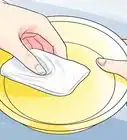X
wikiHow is a “wiki,” similar to Wikipedia, which means that many of our articles are co-written by multiple authors. To create this article, volunteer authors worked to edit and improve it over time.
This article has been viewed 185,506 times.
Learn more...
Orgreenic pans have a natural non-stick ceramic surface and are not coated with any potentially hazardous chemicals, but if you want to get the most out of your Orgreenic pan, you need to season it before use. The seasoning process packs carbonized oil into the cooking surface, thereby preventing food from sticking to it.
Steps
Method 1
Method 1 of 3:
Stovetop
-
1Pour 1 Tbsp (15 ml) of vegetable oil into the pan. Use your fingers or a soft paper towel to spread the oil over the entire inner surface of the pan, including the bottom and sides.
- While Orgreenic recommends the use of vegetable oil, other oils and vegetable shortening could be used, instead. If selecting another oil, opt for one with a high smoking point, like peanut oil, grapeseed oil, or canola oil, over one with a low smoking point, like olive oil.
- This technique can be used on all Orgreenic pans, including all stovetop pans, oven pans, and grill pans.
-
2Heat the pan on the stove until it begins to smoke. Place the pan on the eye of your stove and turn the heat onto a medium setting. Keep the pan on the heat until you can see smoke rise from its surface.
- Expect this process to take several minutes. While you might be tempted to heat the oil on high heat, you need to keep the temperature control set to medium so that the oil heats up slowly. Otherwise, the oil may not seep into the surface thoroughly enough.
- Every few minutes, turn the pan to redistribute any oil that has begun to puddle or bead.
Advertisement -
3Let the pan cool. Remove the pan from the heat source. Set it aside and allow it to cool back down to room temperature.
- Leave the pan out at room temperature as it cools. Do not attempt to cool it down faster by placing it in a refrigerated space, since the dramatic change in temperature can damage the ceramic.
-
4Wipe away the excess oil. Use a clean paper towel to wipe away any visible puddles or streaks of remaining oil.
- The surface of the pan will still feel a little greasy after you wipe it down, but this greasiness is natural and should not be scrubbed out.
-
5Repeat once every six months. Your Orgreenic pan should be re-seasoned every six months. You can do so following this same method or by trying one of the other described methods.
- If food begins sticking to the surface of your pan before six months have elapsed, re-season your pan ahead of schedule.
Advertisement
Method 2
Method 2 of 3:
Oven
-
1Preheat your oven to 300 degrees Fahrenheit (150 degrees Celsius). You can preheat the oven for a temperature as low as 250 degrees Fahrenheit (130 degrees Celsius) or as high as 350 degrees Fahrenheit (180 degrees Celsius), but do not exceed this range.
- Consider using this technique for the Orgreenic roasting pan, baking pan, or grill pan. For stovetop Orgreenic cookware, opt for the stovetop or sunlight methods.
-
2Pour vegetable oil into the pan. You only need to use about 1 Tbsp (15 ml) of oil. Using your fingers or a clean paper towel, spread the puddle of oil over the entire inner surface of the pan, coating the bottom and the sides.
- Vegetable oil, vegetable shortening, canola oil, peanut oil, and grapeseed oil are all acceptable choices. Avoid using butter or olive oil, however, since these fats have a notably low smoking point.
-
3Place the pan in the preheated oven for 60 minutes. Place the pan in the middle rack of the oven and keep it there for a full hour. If you notice smoke coming off the surface of the pan before that time, you can remove the pan early.
- Note that smoke may never actually come off the pan when using this method. That is acceptable, as long as you keep the pan in the oven for the full amount of time.
- If you place the pan in the oven upside-up, the fat could start congealing inside of it. For that reason, many recommend placing the pan upside-down inside the oven. Place a baking sheet lined with aluminum foil on the rack beneath the pan to catch and oil or fat drippings during the process.[1]
-
4Let the pan cool. Remove the pan from the oven and set it out at room temperature. Allow the temperature of the pan to drop to room temperature before touching it again.
- Consider opening the oven door slightly and allowing the pan to cool for a few minutes inside the oven before removing it. Make sure that the oven is off when doing this. After cooling the pan in the oven for 10 to 15 minutes, remove it and finish the cooling process at room temperature.
- Never attempt to cool a hot Orgreenic pan in a refrigerator or freezer.
-
5Wipe off any excess oil. Use a clean paper towel to clean off any excess oil from the inside of the pan.
- The surface may still feel greasy but should not feel sticky. The greasiness you feel is normal, though, and should not be scrubbed away.
-
6Repeat twice a year. Even using the oven method, your Orgreenic pan will need to be seasoned once every six months or so. You can re-season it using this same method or with one of the other described methods.
- If food begins to stick to the food before six months pass, re-season the pan earlier than planned.
Advertisement
Method 3
Method 3 of 3:
Sunlight
-
1Lightly coat the pan with cooking oil. Pour 1 to 2 tsp (5 to 10 ml) of vegetable oil into the pan. Use your fingers or a clean paper towel to spread the oil over the entire inside surface of the pan, including all of the sides and the bottom.
- You only want to use enough oil to coat the surface. Avoid letting the oil puddle up inside the pan.
- Consider using flaxseed oil for this method instead of standard vegetable oil. Flaxseed oil is very light, which makes it an ideal choice when applying a light coating to the pan.
- This technique is the mildest one and is safe to use with all Orgreenic pans, including all stovetop pans, oven pans, and grill pans.
-
2Place the pan in a brown paper bag. Wrap a brown paper grocery bag around the coated part of the pan. The handle can either be exposed or hidden inside the bag; either option is acceptable.
- The paper bag will protect the surface of the pan, concentrate the natural heat from the sun inside of it, and catch any oil that drips off the pan.
-
3Sit the pan in direct sunlight for several days. Find a sunny window and place the pan, still wrapped inside its bag, upside-down in the sunlight. Leave it there for three to five days.
- Placing the pan upside-down will prevent any of the oil from congealing or otherwise making a mess inside the pan.
- Touch the outside of the bag each day. The surface should feel notably warm. If the surface is not warm, the sunlight might not be strong enough at that location.
-
4Wipe away the excess. Remove the pan from the sunlight and from the brown bag. Use a clean paper towel to clean off any visible oil that remains.
- The surface may still feel a little greasy, but that greasiness assists the non-stick properties of the pan. Make sure that there are no puddles of oil and no stickiness on the surface, though.
-
5Repeat every six months. You will need to re-season an Orgreenic pan every six months. Do so using this method or one of the other listed methods.
- Since this method is so gentle, the seasoning may not last as long and there is a good chance that you will need to re-season your pan ahead of schedule. Re-season the pan whenever food starts sticking to it on a regular basis.
Advertisement
Community Q&A
-
QuestionCan I cook with this pan in the oven?
 Community AnswerAbout once a week I make us an egg omelet. I cook the eggs on medium heat until almost set and then I broil it until the top is set. I have found that I can use my green pan for most things that I used to use my iron skillet for.
Community AnswerAbout once a week I make us an egg omelet. I cook the eggs on medium heat until almost set and then I broil it until the top is set. I have found that I can use my green pan for most things that I used to use my iron skillet for. -
QuestionHow can I get the outsides of my pans looking like new again?
 Community AnswerTry soaking them in cider vinegar for a few days, it has a high acidic content that is great for removing rust.
Community AnswerTry soaking them in cider vinegar for a few days, it has a high acidic content that is great for removing rust. -
QuestionCan this pan be used on a NuWave cooktop?
 Community AnswerYou can tell if a piece of cookware will work on an inductive stove top by using a small magnet. To do this, place the magnet on the bottom of the cookware. If the magnet is attracted to the pan, it will work on an inductive cook top. If not, the cookware is not compatible. Most carbon steel pans are compatible, while non-magnetic stainless steel and aluminum are typically not compatible with this style of cooking.
Community AnswerYou can tell if a piece of cookware will work on an inductive stove top by using a small magnet. To do this, place the magnet on the bottom of the cookware. If the magnet is attracted to the pan, it will work on an inductive cook top. If not, the cookware is not compatible. Most carbon steel pans are compatible, while non-magnetic stainless steel and aluminum are typically not compatible with this style of cooking.
Advertisement
Warnings
- Wash your Orgreenic pan by hand after each use. Do not put it in the dishwasher since the dishwasher will wash away the seasoning and could even damage the surface of the pan.⧼thumbs_response⧽
- The stovetop method is the procedure officially recommended by the Orgreenic company. Use one of the other methods at your own risk, since the results are not guaranteed to be as effective as they would be when the official method is followed.⧼thumbs_response⧽
- Make sure that you pan is clean before you season it. Wash the pan, by hand, using warm water and soap. Dry it completely with a dish towel or with paper towels.⧼thumbs_response⧽
Advertisement
Things You'll Need
- Orgreenic pan
- Vegetable oil or shortening
- Baking sheet (optional)
- Aluminum foil (optional)
- Brown paper bag (optional)
About This Article
Advertisement
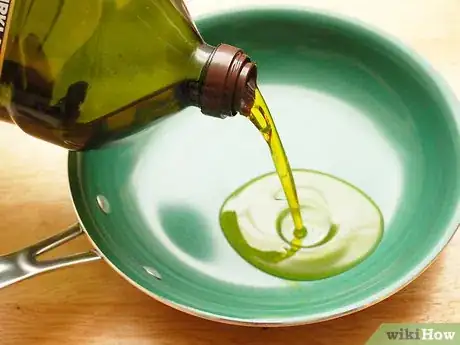
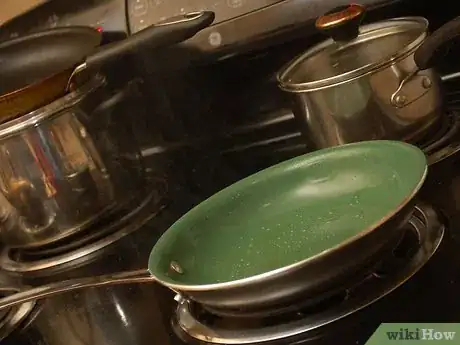


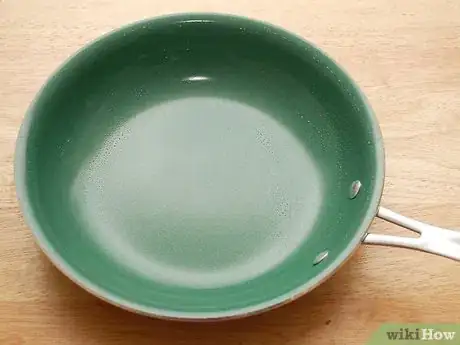
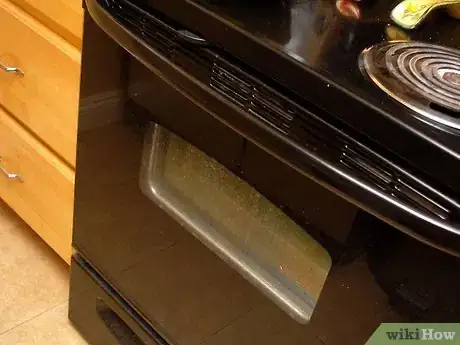


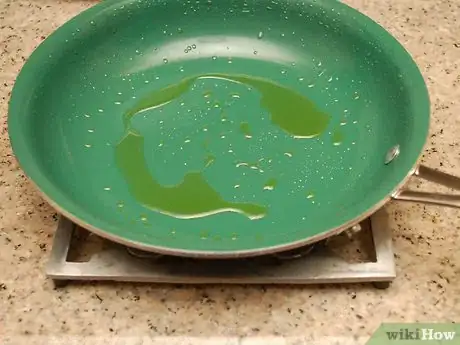
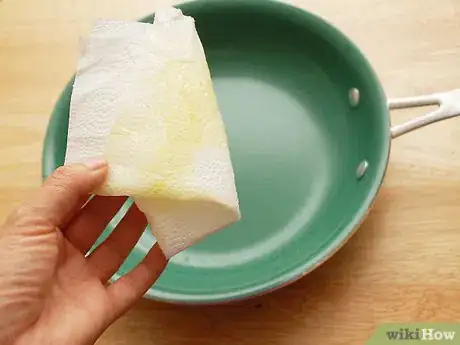
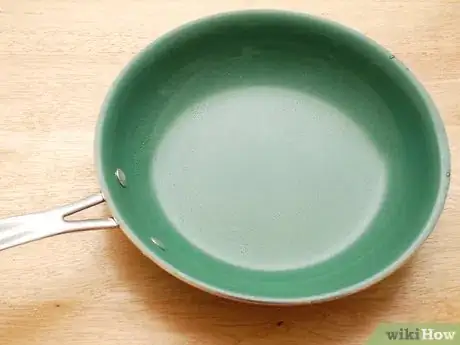
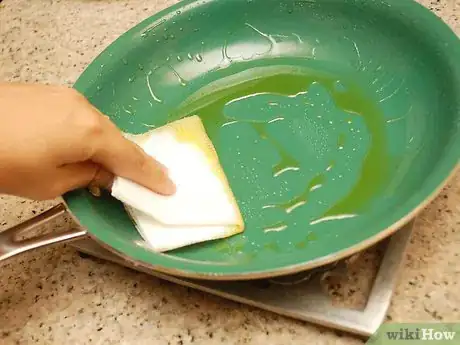
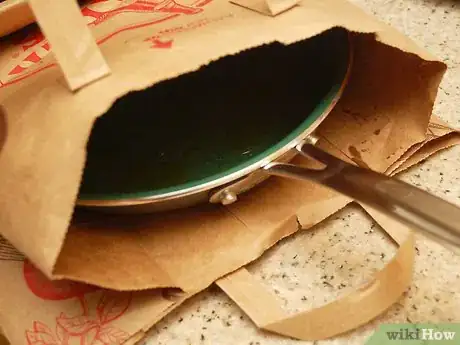
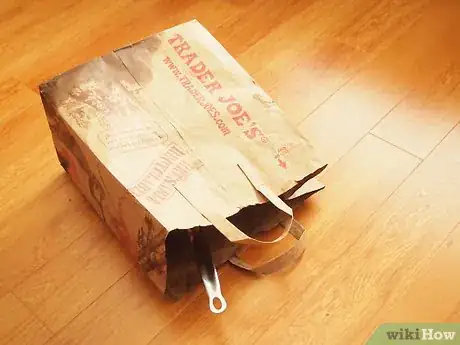
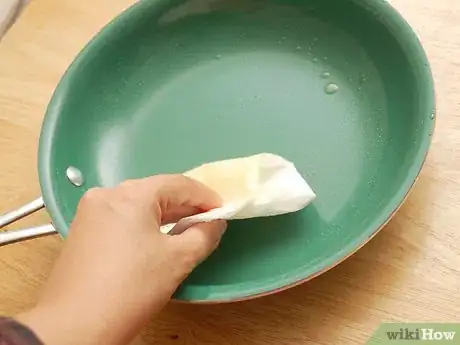
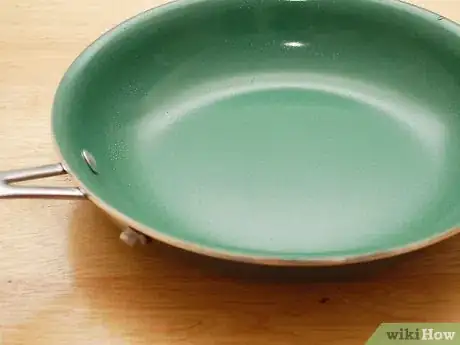

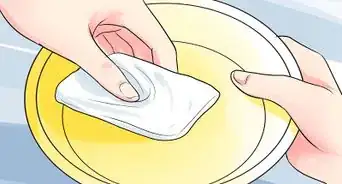

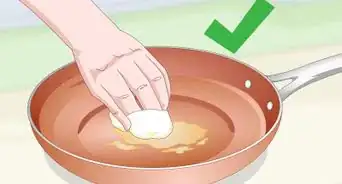
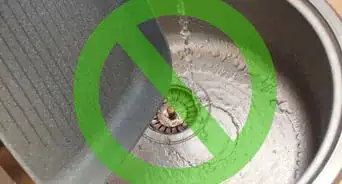
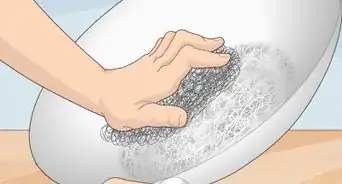






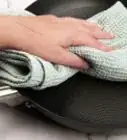
-Step-12-Version-2.webp)

